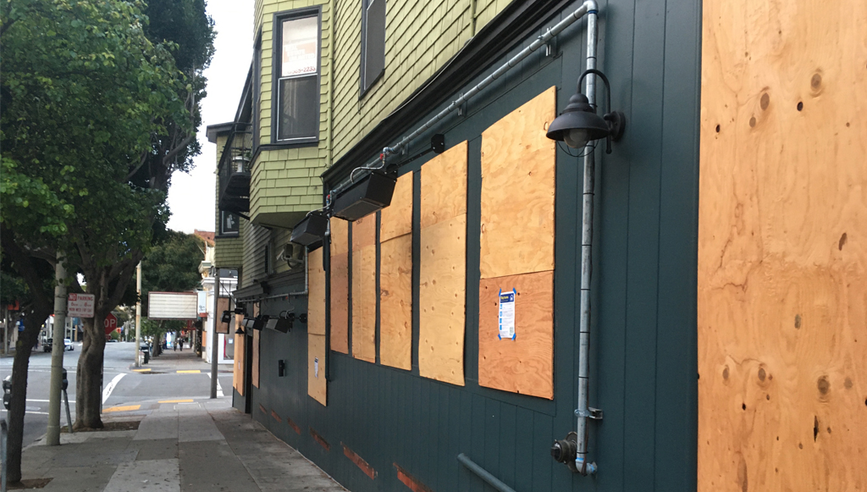How to Protect Your Business Property During Times of Civil Unrest


During times of civil unrest, emergency resources to protect business property become depleted. Blocked streets, large congregations of people or a lack of adequate resources can disrupt the ability to respond to emergencies. Authorities may become overwhelmed and only able to acknowledge reports of fires, looting and vandalism.
Property damage can result from these events, particularly for buildings in congested areas or close in proximity. Businesses can take steps to protect their property if civil unrest is anticipated. Adequate planning and preparation can help businesses get the appropriate protections in place. Develop a site-specific action plan that identifies measures and resources that would be needed to protect property and equipment from damage and to help minimize business interruption. Make sure that the action plan does not place yourself or your employees in harm’s way.
Protect the building
Storefront properties and other businesses can be subject to fire, looting and vandalism. Confirming that fire protection systems are in good working order and securing the building and utilities are key steps to help mitigate damage. Here are some additional tips to help protect your building:
- Keep automatic fire sprinkler systems and fire alarms in service.
- Confirm that sprinkler control valves are in the open position and lock all control valves.
- Have portable fire extinguishers present throughout the property.
- Secure all access points to prevent unauthorized access, including windows, skylights, roof access and trash chutes.
- Where possible, secure large windows with roll-down shutters or plywood boards or use steel gates and burglary-resistant glazing to help deter against projectiles.
- Utilize a UL-listed central station security alarm system.
Reduce and remove inventory, valuables and possessions
Businesses can take steps to either safeguard or remove things that are valuable and/or critical to their operations to a more secure location. First, identify valuable inventory, important records, critical machinery and other key business items that should be carefully protected. Then take steps to either secure these items on-site, or if possible, remove them off-site. Consider the following:
- Remove cash and lockboxes from the site.
- Remove goods from display windows and show cabinets; secure high-value merchandise.
- Secure essential business records and maintain backups of all key information at an off-site location.
- Move company vehicles off-site.
- Park vehicles that cannot be moved off-site in a manner that helps reduce the likelihood of vandalism.
- Lock interior areas with a high concentration of valuables, such as computer equipment, to prevent access.
- Additionally, it is good practice to inventory and photograph your property regularly to document the property before any damage occurs.
Secure the property
It is important to consider the impact of unauthorized access to the perimeter of your property for those businesses that maintain a yard, outside storage and other industrial business structures. For example, combustibles stored in the yard can be a target for arson. Consider the following to help secure the perimeter to your property:
- Maintain full perimeter fencing with secure gates.
- Ensure that emergency responders have site access via a Knox box or breakaway shackles.
- Adequately light all sides of the building exterior, yard and 10 feet around the perimeter fence.
- Consider removing yard storage from the property, securing in trailers or moving inside the building.
- Provide signage around the perimeter prohibiting access and warning that trespassers will be prosecuted.
- To help prevent risk of damage from projectiles or fire, remove any trash, debris, combustible storage and unwanted vegetation from around the building.
- Move dumpsters, storage pods or other large equipment that can be climbed to access roof or upper floors, away from the building.
- Ensure that security personnel remaining on-site are familiar with company emergency procedures and have a current directory of emergency contact numbers.
As part of your business continuity plan, thoughtfully consider and plan for the possibility of civil disturbance. Plan early and identify steps to help prepare and protect your property.



